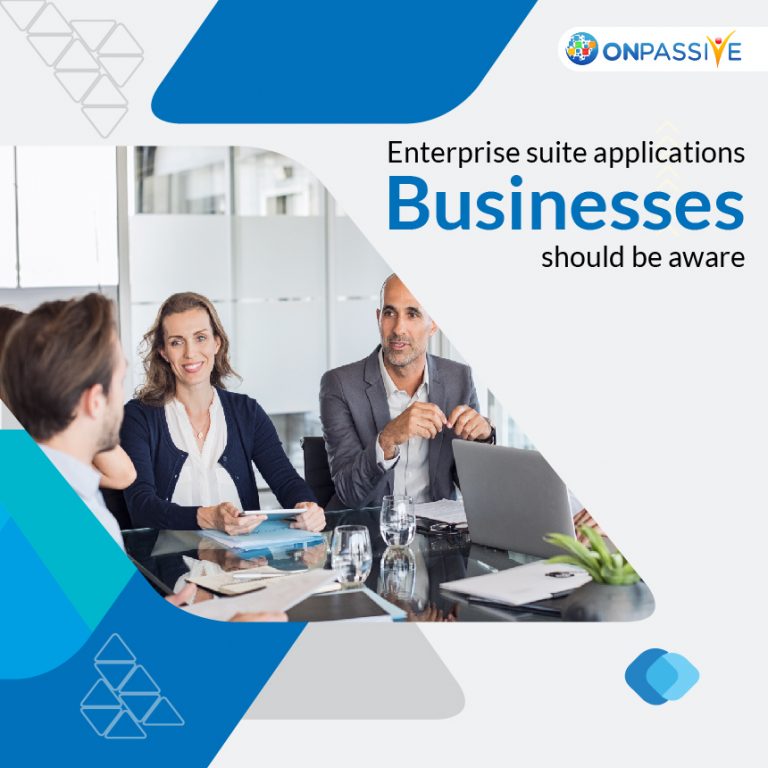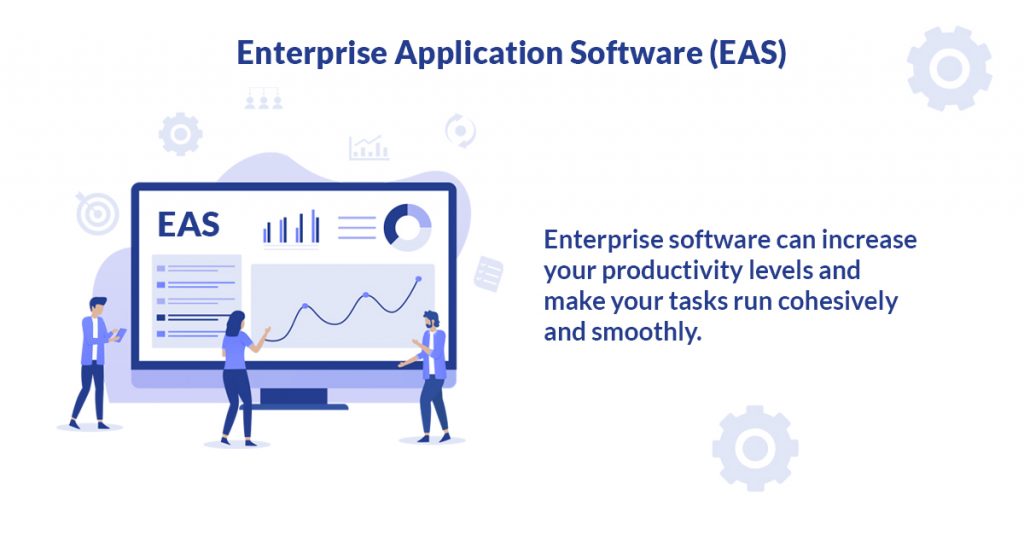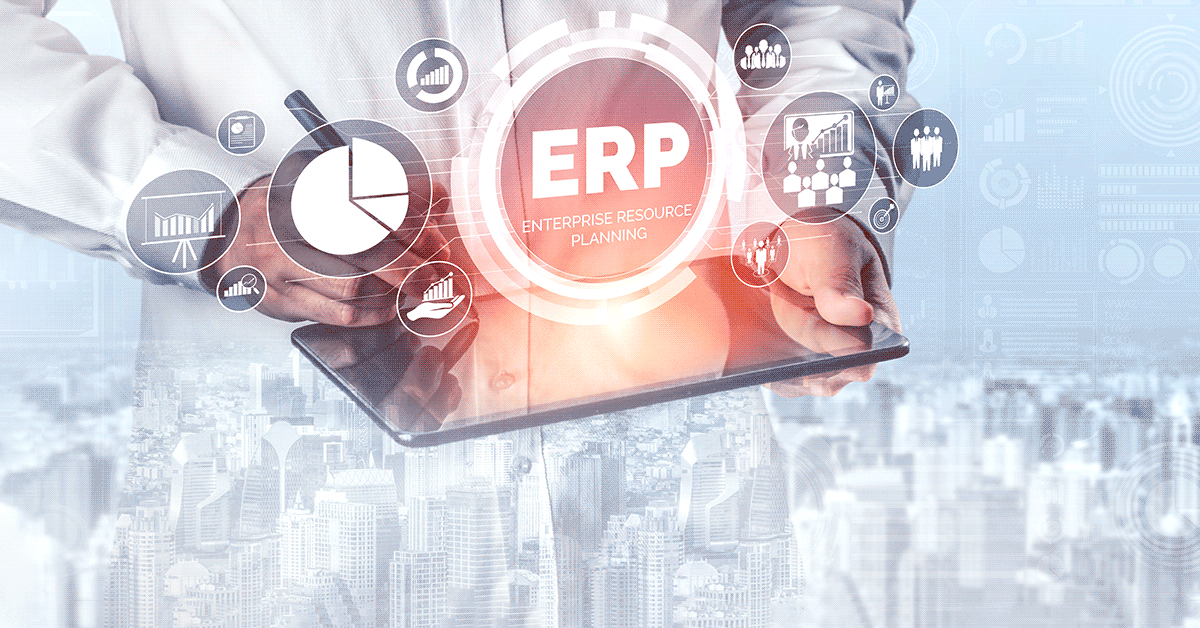
When we talk about technology, it is now overwhelming to keep on top of new trends and terminology. Enterprise application software (EAS) is a word that we frequently hear; however, it isn’t always easily characterized.
Today, organizations need definite admittance to information no matter how you look at it. It isn’t just significant for private small businesses; however, enterprises are considerably more compelling to obtain the ideal information management processes and guarantee stable development.
The tremendous potential that enterprise software (ES) has acquainted with the world by the power of technology has shifted how organizations develop and monitor their operational and critical activities and state-of-the-art.
In general, enterprise application software is a large-scale software intended to support or tackle an entire organization’s issues. This large-scale enterprise software allows for several different user roles, and the positions characterize the actions a particular user can perform.
Instances of generic enterprise application software when Instances in a sales setting. Enterprise software incorporates numerous functions and abilities:
- Customer service representatives can follow customer issues and correspondence alongside internal responses and updates.
- Salespeople can log customer data, including personal and product data and client location in the business sales pipeline.
- Managers and C-level heads can track customer and employee performance.
- Internal- confronting employees can take client specifications to fabricate the product.
Characterizing Enterprise Software
An enterprise is a large-scale organization, follows enterprise application software is large-scale software.
Beyond just the software’s size, enterprise application software ordinarily alludes to software that provides mission-critical answers to the organization’s whole or majority. If the software deals with a dominant part of errands and issues inherent to the enterprise, at that point, it may be defined as enterprise software.
- High performance – An enterprise suite application should deal with the whole organization’s pressure utilizing it consistently.
- The organization wholly owns them – No compelling reason to share the application with many different clients, which assists with quick questions.
- High customization – likely created explicitly to coordinate and match your business processes.
- High scalability and extensibility – The framework grows along with your business.
- A large number of integrations – different frameworks are cooperating to play out an assortment of tasks.
- Data Portability – You can separate the information stored in the system for various purposes.
- High security and robustness – Enterprise software systems are customarily outfits with several layers of protection.
Comprised of a suite of computer programs, for example:
- Common business applications
- Tools for modelling the whole organization
- Development tools to build applications one of a kind to the organization
Any enterprise software will probably have numerous capabilities. For example, if you’re looking for an IT management enterprise software choice. You’ll probably need to take a gander capability that is indispensable to managing your enterprise’s service experience.
How is Enterprise Application Software different from other kinds of software’s?
Software is a set of instructions or electronic program data that a PC “reads” to play out a task or operation. There are two types of software:
- Systems software alludes to the software programs that help the PC run, similar to the operating framework. Without software, we would have to manually enter directions for a particular task we need a PC to complete. Instances of systems software incorporate Microsoft Apple’s OS, Windows, and others.
- Application software is the day-to-day software we depend on to create archives, databases, presentations, spreadsheets, graphics, and more. We use application software, regularly abbreviated to applications, to finish a function or even play a game. Top enterprise application software falls into this class, as its role is to help a large enterprise’s mission.
Application software can additionally be divided into two types: applications that fill the needs of people or the purposes of a larger group, for example, an enterprise. On the off chance that the software takes into account a particular or small portion of the enterprise, it may not be viewed EAS. Further, top enterprise application software isn’t intended to help individuals’ work or hobbies, for example, Microsoft Word or a single-person game.
Organizations, governments, and different enterprises probably depend on various software packages to cover business needs. While enterprise software is typically ample of these, an extremely famous alternative is software-as-a-service (SaaS).
For what reason Enterprise suite Applications are critical to Data Quality?
Enterprise suite Application systems are consistently the focal centre point for a large variety of information showing up from a large number of sources. In this way, they help integrate contact data validation and enhancement solutions as you can ensure all data then entering the system is of high quality.
EA systems integrated with these solutions will help you drive:
- Good client connections
- Improved organization productivity
- Precise data-driven insights
Some of the widely utilized and acknowledged types of enterprise application software include:

Customer Relationship Management (CRM) Software
Except if you have superhuman organizational skills and the memory of an elephant, there will be times that you let correspondence diminish, missing opportunities to settle a deal, upsell, cross-sell, or market new items to existing clients.
As PC World puts it delightfully, “Customer relationship management software is a contact list with a brain.” This kind of enterprise software works by giving you an essential overview of where you are with each customer, pulling together client contact data and subtleties of when and how you’ve been in touch.
It remembers interactions in individual, through online social media, over phone and email and perhaps even calls to client assistance, and notes on where you left things with them – assisting you with ensuring a significant client never tumbles off your radar again.
Regularly, the best CRM services incorporate highlights like work process automation, committed document libraries, role-based client access, multi-currency uphold, email integration and tracking, and lead capture from sites and custom detailing.
Advertising and Marketing Automation
As your organization expands, there is only no real way to perform all of your day-to-day marketing activities on a manual premise. You can’t deal with each unique person on a sprawling mailing list, personally, reply to every Facebook message or new request, or even to post every Tweet or LinkedIn update continuously, yourself.
It is the reason enterprise software for marketing automation is convenient. Enterprise suite applications permit you to communicate with the audience via email, social media, and digital advertisements. Quickly and effectively segment your rundown to make focused and targeted marketing campaigns, and set things up, so you contact targets after a predetermined action or an ideal timeframe.
This technology can radically improve proficiency, keep crusades on schedule and improve exactness, permitting marketing teams to focus on creating unique content or developing big, goal-oriented strategies and campaigns.
Project Management Tools
Among the most available enterprise apps are those outfitted towards better project management for teams.
These are intended to assist you to collaborate viably, whether your team is scattered all over the globe. It ensures everybody involved has defined targets and deadlines and can drop in whenever to check on progress and ensure they have what they need from their colleagues to complete their work.
Generally, tools like these give an outline of all active projects, yet permit you to jump into each one to check each achievement, every detail, and every upcoming task you need to complete to keep your progress on schedule.
These applications are a fantastic way to visualize shared work processes, expand productivity, keep up the momentum – and ensure no task gets forgotten.
Enterprise Resource Planning (ERP) Software
An ERP framework essentially takes all the various business modules, digitizes them, and creates complex networks between them. That means everybody is working from the same core records and up-to-date data.

The framework likewise integrates with other significant enterprise software tools, including CRM, BI, financial information, inventories, resource and supply chain management technology, materials asset management, point of sale information, and sometimes even project management dashboards & applications.
Actualizing and implementing an ERP can clean up how more prominent organizations operate by making activities and work processes more cohesive and straightforward. They additionally offer up significant insights that help recognize bottlenecks and shortcomings and improve planning for the future.
Business Intelligence (BI)
However, in this rapidly changing corporate landscape, top-notch data analytics and the capacity to comprehend where your business is, how it arrived, and where it’s going next is especially significant. It implies that having an accurate, reliable, and robust BI tool set up is vital.
BI software works by pulling in information from all your data sources, harmonizing and combining this, and permitting you to run inquiries that extract actionable and significant insights from these disparate sources. Typically, these insights are introduced in dashboards that advise you how the business is getting along and advancement you’re making on hitting your notable KPIs.
As with all these types of enterprise software applications, not all BI platforms are made equivalent. Specifically, numerous BI vendors guarantee that their software is self-service, yet definitions of self-service cloud BI shift contingent upon whom you talk.
Preferably, you ought to be looking for a framework that permits non-technical clients to control dashboards and query information without IT getting included, yet without losing the extremely significant granularity that helps you understand what’s happening, and why.
Treasury Management System (TMS)
The purpose behind a TMS is to give a solitary version of truth where everything financial in your business is concerned. It gives you a total overview of where the cash is in the association, assisting you in tracking and foreseeing income, oversees debt, alleviates FX risk, and frees up money for investments.
It guarantees that you’re generally on the right side of relevant compliance guidelines and regulations – and handle virtually any other tasks that come under the broad umbrella of corporate finance.
Because of some undeniable overlaps, organizations have already splurged on an ERP don’t see the purpose of a dedicated TMS and smaller enterprises that are likely fair and reasonable.
Then again, if you’re a large company shuffling a wide range of speculations, you deal with several different currencies. Additionally, you have multiple locations and bank accounts spread across the world; you’ll struggle to find an ERP that has the full functionality and usefulness you need to deal with your cash in the best and agile way. Seeking out a top framework that coordinates flawlessly with your ERP will probably be a better shot.
Supply Chain Management (SCM)
Each organization associated with manufacturing needs to manage procurement, stockpiling, delivery, and distribution. Ordinarily, these tasks are completed by people in various departments, for multi-location enterprises, overseeing dozens, if not many providers are practically inconceivable without specific software.
Supply Chain Management (SCM) tools help guarantee a consistent progression of supplies necessary for continuous production and delivery. They can help you accumulate, store, and manage data about sales & materials ordering, providers, manufacturing, procurement, order processing, warehousing, logistics, and distribution and facilitate collaboration between all supply chain links.
The framework assists organizations to monitor emission factors across the entire supply chain. A unique risk management module permits them to audit contractors with the assistance of a survey constructor. Subsequently, organizations can recognize social responsibility risks and increment sustainability indicators.
Human Resources Management (HRM)
The bigger the enterprise, the harder it is to search for good job candidates. You can automate many routine tasks with HRM software like recruiting, payroll management, workforce planning, performance management, finance, reporting, employee training and commitment.

As none of the current tools fit their business measures, they went for a custom framework that would fulfil all their necessities:
- Powerful semantic search and matching permit HR supervisors to type a solitary request into an inquiry bar and coordinate with hundreds of essential profiles.
- They can set up channels like job responsibilities, skills, desired compensation, and region. The framework will search for all accessible platforms for appropriate applicants.
- Data management that makes it simple to add job applicants to the database. The system can parse CVs in any format and add essential data to the candidate’s profile. Rather than exploring many folders with outdated documents, the team would now automatically have candidate profiles.
- Recruitment workflow automation that wipes out monotonous tasks permits the team to focus up to 80% of their time on essential and strategic efforts. HR managers can message the candidate, send a CV to the client, get input, assign a job interview, do a subsequent call and more, all in one app.
- KPI dashboards with real-time performance information. A flexible dashboard displays crucial metrics, visualizes information and permits HR managers to generate customizable options.
Custom task manager – The HR agency was overwhelmed by countless opportunities and applicants since they work with large organizations. They frequently missed appointments and follow-up calls. Presently the system consequently generates a daily to-do list for each HR manager. They can allocate tasks, set updates, delegate responsibilities, and get announcements at whatever point required.
Instant Messaging Software and Tools
Team communication as instant messaging and texting has become a standard process in our advanced digital age, even though instant messaging has its origins more in the private circle (IQS, MSN Messenger, and WhatsApp).
Modern enterprise messengers offer various advantages for corporate correspondence and can integrate into existing operating software. In addition to other things, they give accurate documentation, empower quick reactions and topic- or project- explicit group chats, which eventually prompts higher profitability and better business choices.
Conclusion:
Enterprise application software focuses on the collection, display, and manipulation and the storage of tremendous and complex information, which is utilized for the automation of the business activities. Enterprise software can increase your productivity levels and make your tasks run cohesively and smoothly.


